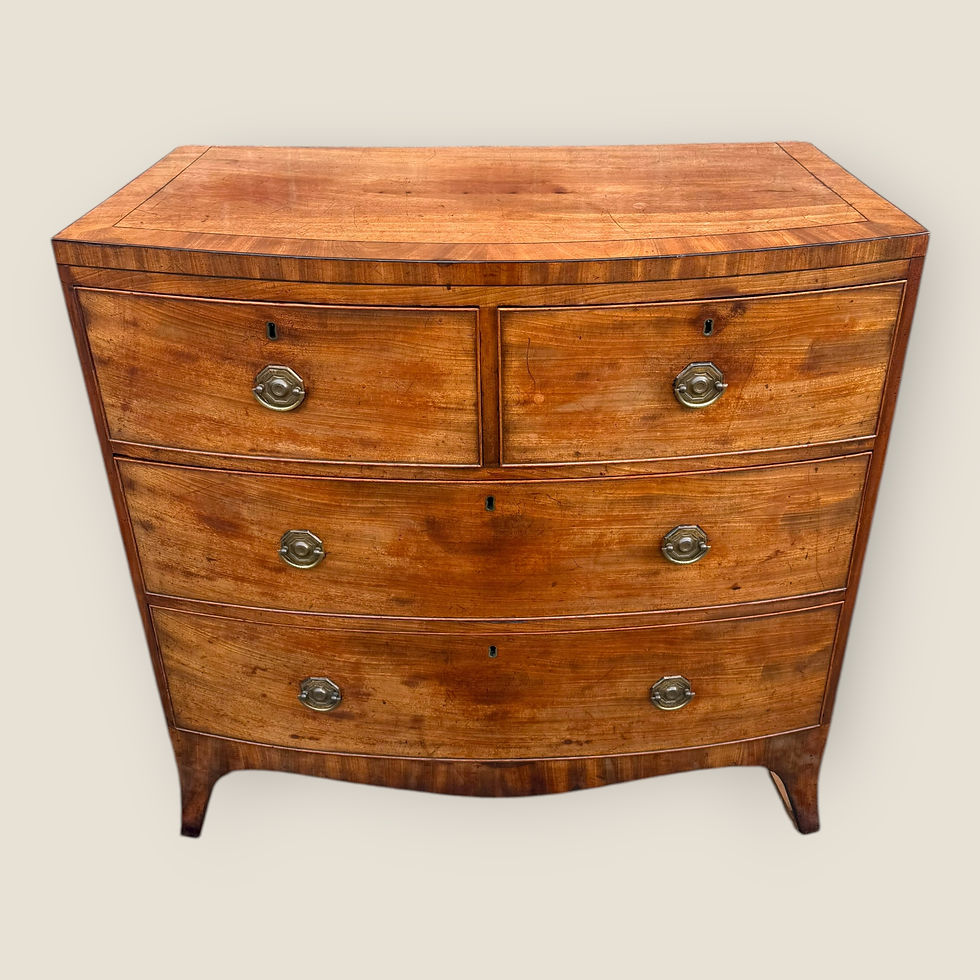Made by one of Britain’s most esteemed cabinet-making firms, this is a fine antique English William IV (1830–1837) rosewood carved tilt top tripod table fire screen, executed in the manner of Gillows of Lancaster.
The piece is conceived primarily as a side table of superb quality, distinguished by a rectangular top framed with finely carved floral detail. At the centre lies a glass-protected panel enclosing a needlework scene of considerable charm. Ingeniously designed, the top can be tilted upright, allowing the table to serve as a fire screen when required. This dual function demonstrates the practical ingenuity and refined aesthetic characteristic of Gillows’ work.
The tripod base is a particular highlight, exceptionally carved and terminating in well-defined paw feet, each set on the original “Cope’s Patent” brass casters—an innovation valued in the early 19th century for both durability and ease of movement. The overall execution of the carving, with its precision and depth, reflects the highest standards of Gillows’ workshop.
The needlework itself depicts a Persian-inspired hunting subject: a falcon standing proudly upon a perch, with Middle Eastern trees, a pond, and an architectural backdrop. In the foreground rests the falcon’s hood, a carefully observed detail that lends authenticity to the scene.
This rare survival, combining elegance, versatility, and quality of execution, stands as an unusual and distinguished example. Few comparable pieces are recorded, making it a highly desirable acquisition for the discerning collector.
What is Needlework?
In the 18th and 19th centuries, embroidery was an essential part of female education, cultivating both dexterity and accomplishment. Girls produced decorative and pictorial panels, often worked with extraordinary patience and skill. Such needlework was sometimes incorporated into fine furniture, bringing a domestic, personal element to highly crafted objects. The example here demonstrates refinement and a clear artistic eye, harmonising with the quality of the table itself.
Provenance
A card accompanies the piece, noting that the needlework was executed by a schoolgirl in 1843. Embroidery of this kind was frequently undertaken in schoolrooms at the time and was occasionally used by cabinet makers to adorn furniture. While the base dates to the William IV period, the needlework was likely inset within a decade of its creation. Together they form a compelling narrative, uniting masterful cabinet-making with the artistry of domestic needlework.
Gillows of Lancaster
Established in the early 18th century, Gillows of Lancaster earned a reputation as one of Britain’s foremost cabinet-making firms. Renowned for their innovation, use of fine materials, and meticulous workmanship, they supplied commissions to many of the country’s grand houses. Their designs influenced the course of English furniture across the Georgian, Regency, and Victorian periods. Pieces in the manner of Gillows continue to be admired for their elegance, quality, and enduring appeal.
Condition: A superb condition 190 year old table. On the needlework there is a very slight tear to the reverse (shown in pictures), which does not affect the front scene
Antique William IV Gillows Carved Rosewood Tilt Top Tripod Table Fire Screen
Table Height - 76.5 cm / 30.19 inches
Width - 60 cm / 23.62 inches
Length - 82.5 cm / 32.48 inches
Height (Fire screen Up) - 118.5 cm / 46.65 inches
































